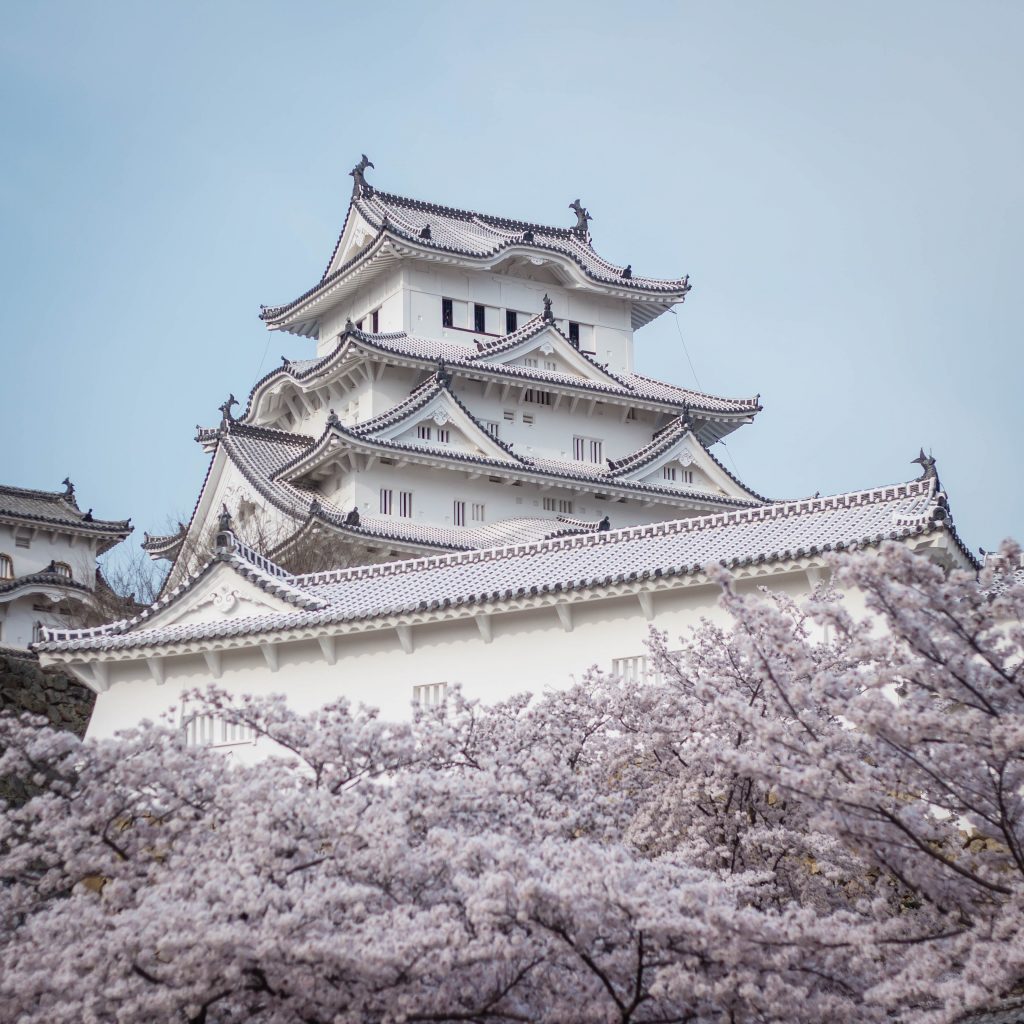For our next stop in our exploration of design, we are heading to the land of the rising sun, Japan.
Japan has a very distinctive style of buildings that are recognizable in an instant. And Himeji Castle is a perfect example of this.
With it’s Cherry Blossom trees and upturned pagoda roof style, a quick glance is enough to know that this is a Japanese structure.
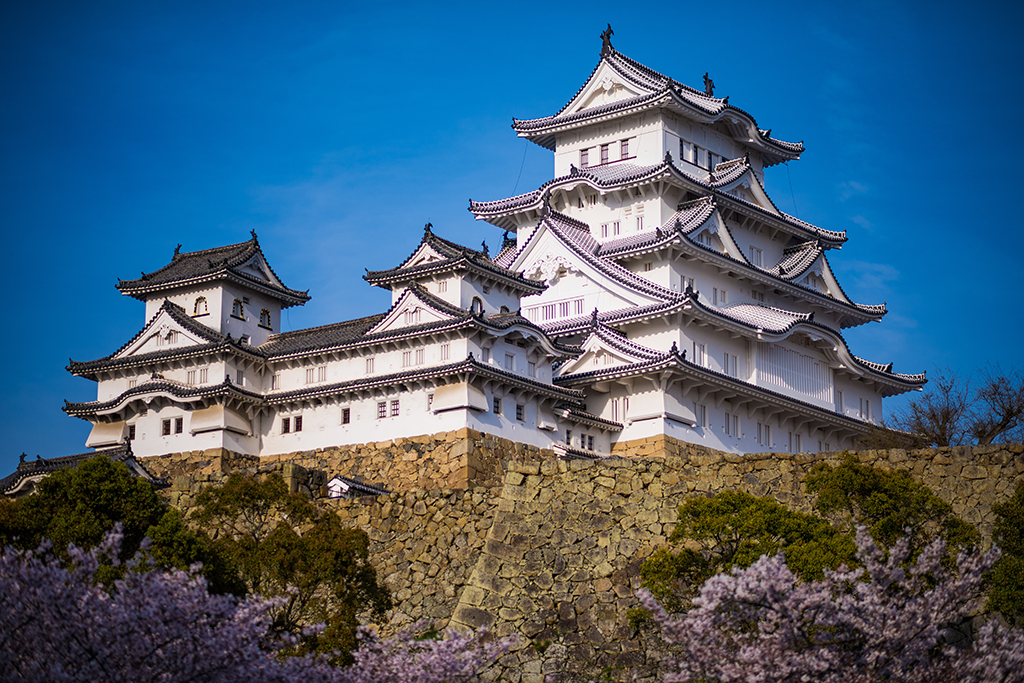
Japan’s Best Preserved Castle
One of the things that makes the Himeji Castle so interesting is it’s rich history. It’s one of only 12 remaining original castles of Japan. Himeji Castle has a history of over 600 years and is the largest and most visited castle in Japan.
And in 1993, Himeji castle received the honor of becoming Japan’s first UNESCO World Heritage site.
White Heron Castle
Due to it’s white exterior, the Himeji Castle is sometimes known as Shirasagi-jō, which translates to White Heron Castle.
It’s primarily constructed using stone and wood and it serves as a great example of the style and design of Japanese castles.
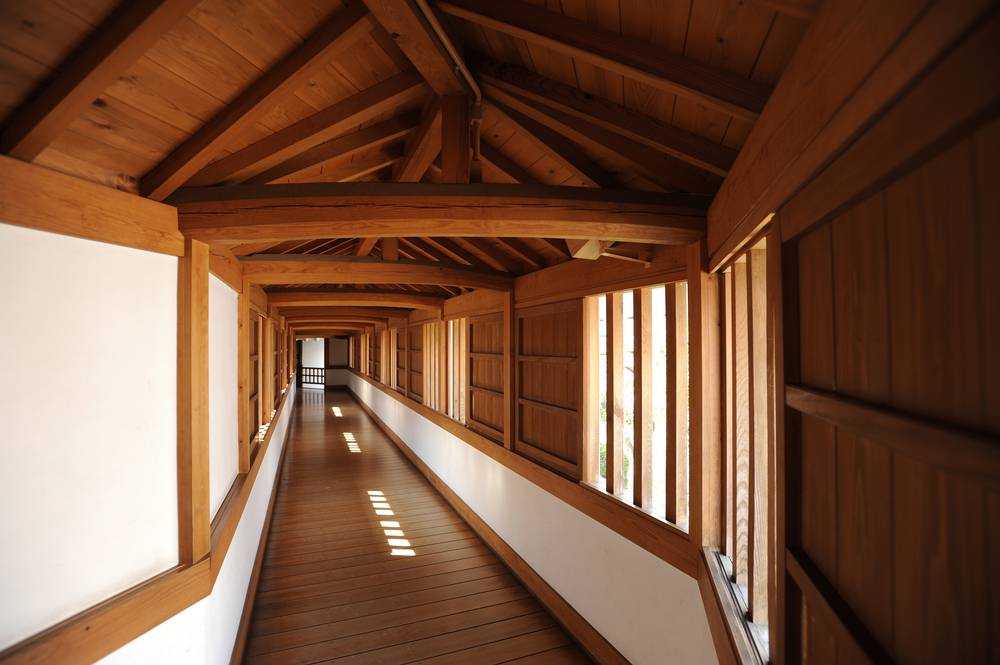
The entire Himeji Castle complex has 83 buildings, and from east to west has dimensions of 3,120 to 5250 feet.
All in all, the entire complex covers an area of 233 hectares (or 576 acres).
Not Just a Pretty Face
Although no one can deny it’s beauty and magnificence, it’s important to note that the Himeji Castle complex was also designed with defense in mind. It contains complex defense systems from the feudal period.
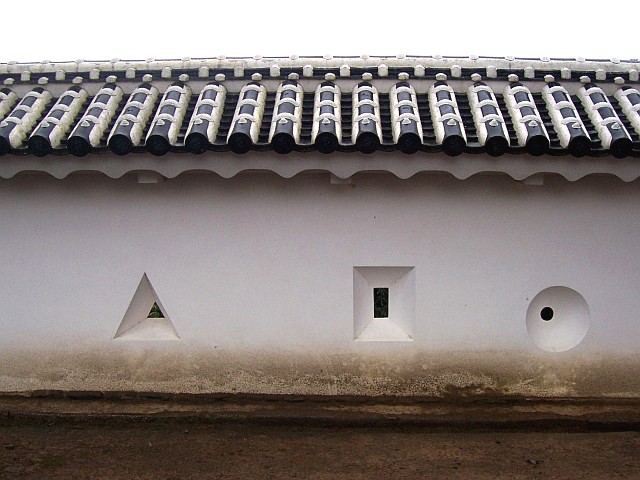
As you can see from the image above, Himeji Castle has a variety of arrow slits that made it easier to fire arrows from the inside whilst being protected from attacks from the outside.
And roughly 1000 of these arrow slits remain on the structure today.
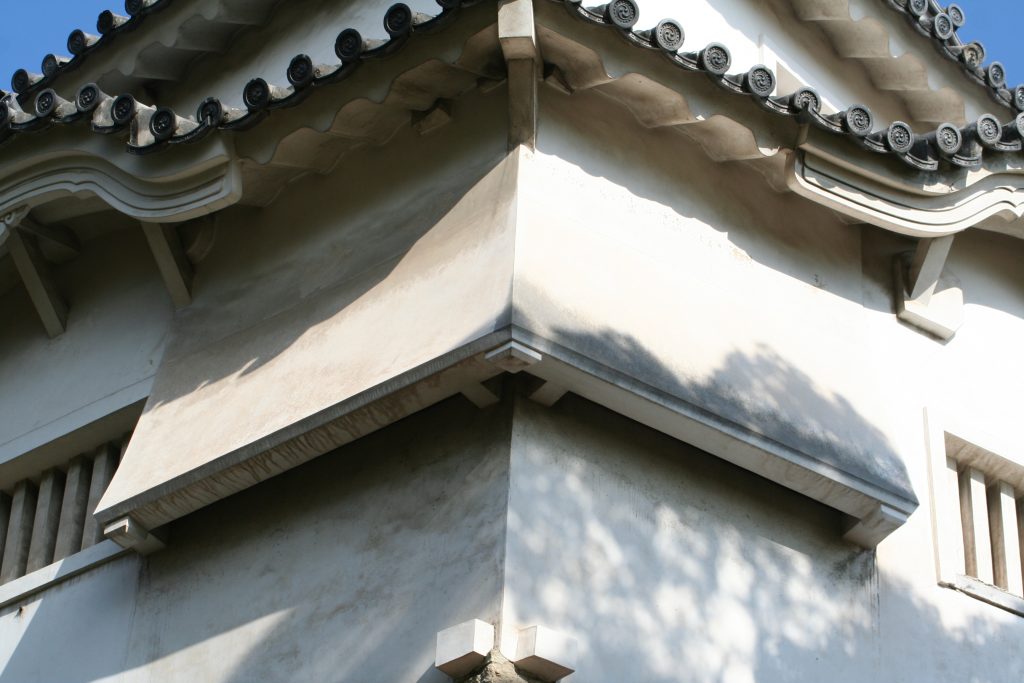
Another defensive feature present on the Himeji Castle are angled chutes called “stone drop windows”. These allowed for boiling oil or stones to be dropped on the heads of enemies passing underneath.
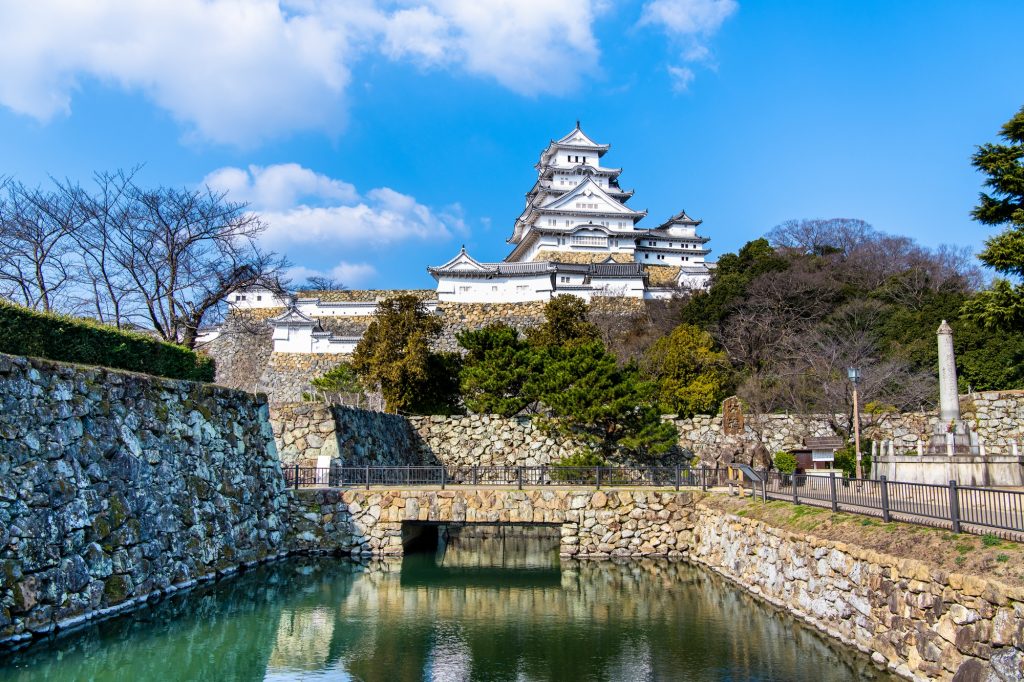
The Himeji Castle complex also had 3 moats surrounding the complex which provided an outer layer of defense. However, the outermost moat was buried so only parts of the center and innermost moat remain.
Myths and Lore
Beyond it’s beauty and defensive capabilities, the Himeji Castle is known for it’s various myths and lore surrounding it. For example, a well known Japanese ghost story called Banshū Sarayashiki (播州皿屋敷, “The Dish mansion in Harima Province”) is set in Himeji Castle.
In addition to that, there’s another story associated with Himeji Castle called “The Old Widow’s Stone”. According to the story, they ran out of stones while building the structure but an old woman heard about the troubles and gave her millstone to help finish the building. It was said that others, hearing about her selfless gesture were inspired to offer stones of their own and this helped speed up the construction of the castle.
To this day, the supposed millstone donated by the woman can be seen inside the castle complex covered in a wire net.

